Society Members –
The CFA Society of Minnesota is fortunate to have more than 150 active volunteers that serve on our committees and help with individual events. This allows us to be innovative and try new things while still maintaining our popular events and programs. Although we currently have an abundance of energetic, thoughtful people on our Board of Directors and our committees, we must continually replenish our volunteer base. Every year we have 3-5 Board positions as long-time volunteers roll off the Board, and committees frequently have the need for new volunteers throughout the year.When we prepare for Board transition we look for new Board members and committee volunteers from a variety of industries – some even outside of finance, such as people with experience in human resources, marketing, accounting or law. We seek diversity in all aspects including, experience and viewpoints. We strive to represent the interests of the entire body of local members and of all occupations either directly or indirectly related to investment management. Many people do not realize that you do not have to be a charterholder to be on our Board or to volunteer with one of our committees. Event and committee volunteers technically do not even need to be local society members, though most choose to join once they start volunteering.
Our Nominating Committee for the upcoming fiscal year will begin their work in May, but it is not too early to put out the call for new volunteers. If you have an interest in joining our Board, assisting with a single event (such as the upcoming Intellisight Conference), or helping one of our committees (Employment, Membership and Advocacy have the biggest needs) please let me know and I will get you in touch with our staff or a committee chair. If you want to learn more about volunteering in general please send Diane Senjem or me an email and we can discuss the current opportunities. I guarantee we have a spot for any level of time commitment. If you know of someone who might be a good fit we also accept referrals.
To all our past, current and future volunteers, thank you so much for your contributions to the CFA Society of Minnesota.
Joshua M Howard, CFA
President, CFA Society of Minnesota





